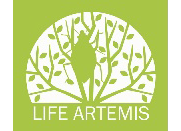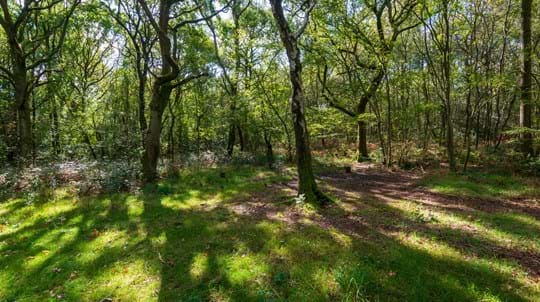
The role of citizen science in tree health in Slovenia
Slovenian Forestry Institute
As part of the International Year of Plant Health, Observatree is hosting some blogs from colleagues around the world who, like us, are working to slow the spread of invasive tree pests and diseases. Below is a blog from some of the team at the Slovenian Forestry Institute, Simon Zidar and Dr Maarten de Groot.
The project LIFE ARTEMIS
The project LIFE ARTEMIS is a communication project with the aim to increase public awareness about the problems and risks that invasive alien species (IAS) pose to our nature and well-being. The goal of the project is to reduce harmful impacts of IAS on biodiversity by setting up an effective scheme of an early warning and rapid response (EWRR) system for IAS in forests, including tree pests and diseases.
Observe, take a photo and report
The first and most crucial moment of the EWRR system is that the newly arrived pests and pathogens are observed and reported as soon as possible after their introduction to the new territory. Therefore, it is important to have an efficient and easy-to-use tool for reporting the observations. For that purpose, the special mobile and web application called “Invazivke” (Eng. Invasives) was developed within the LIFE ARTEMIS project. Registered users can simply take a geo-localized photograph of the observed IAS via the mobile app and report it instantly into the system. Data are then verified and assessed by the competent experts and the rapid response measures (e.g. eradication) are commenced if needed.
Educate yourself and observe carefully
In the project we intend to improve the national capacity for early detection of alien species in forests by mobilizing and training professionals as well as volunteers. We have organized many various presentations and field excursions, where people were acquainted with IAS, their recognisable characteristics and gained skills about the use of the “Invazivke” application. Alert and observation lists were prepared to focus on species with a potential severe influence on natural environment, especially on forests. There are currently 58 plant species, 13 insects, 13 fungi and 7 mammal species on the alert list of forest IAS for Slovenia. Additionally, on the observation list of IAS we included also 10 plant, 10 insect and 9 fungi species.
Field guide for species identification
We have presented the IAS from the priority lists for forests in the field guide – a very concise and useful tool for species identification in the field. Here, the species are presented with descriptions, photos and illustrations of the identification characteristics and possible misidentifications are explained with similar species. A field guide was additionally translated in English and was adapted for the European forests level in collaboration with the Alien CSI COST Action and can be downloaded from here.
Strong base of citizen scientists
In 3 years, we collected more than 13.500 data on IAS (plants, fungi and animals) via mobile and web app with the help of professionals and citizen scientists. At the end of the year 2019 the mobile app had 1447 registered users and this number is rising every year. In total the “Invazivke” database includes more than 70.000 IAS records as data from other projects and pre-existing databases, which are connected and regularly automatically transferred into the “Invazivke” system. One of the more important existing databases is also the one of Slovenia Forest Service with the tree felling data obtained on the field. This database contributes more than 70 % of the information system’s records and therefore, gives a good overview and professional knowledge for some alien tree diseases and pests.
What is attacking our oak trees?
One of the most noticeable tree pests that is spreading in Slovenia in the last few years is the North American oak lace bug (Corythucha arcuata). It was first reported in 2016 from the Eastern part of Slovenia. The species has most probably spread from the neighbouring Croatia, where heavy attacks of oak lace bug were observed already in 2013. In 2018 the species started to spread through Slovenia and was mainly observed just by the main traffic corridors and in the east of the country.
It was only in 2019, when the species apparently reproduced so numerously that a larger parts of forests stands were visibly affected in many parts of the country. Signs of the oak lace bug attack are very characteristic and appear as the yellowish discoloration of the oak leaves, caused by the insects sucking the plants sap. Leaves can dry out and shed prematurely, having impact especially on young trees, which are therefore weakened, and forest rejuvenation might be impeded. With the help of citizen science and foresters, we monitor the spread of this species in Slovenia and the response of oak trees to this newcomer. What the future will bring for European oaks is however still unclear.
Ashes to ashes – what is happening to ash trees in Slovenia and Europe?
Ash dieback is caused by the fungi Hymenoscyphus fraxineus and is causing problems throughout the Europe. European ash trees are not adjusted to this Asian fungus, causing a massive ash dieback in many European countries. The first observation of the disease in Slovenia dates into 2006. Fungi infest predominately Fraxinus excelsior and Fraxinus angustifolia, which are two important forest tree species in Slovenia. Symptoms of the disease include brown lesions on leaves and leaf-petioles. Fungi also infect bark and causes lesions and dieback of shoots. Trees are often heavily infected, and many branches die back, however new shoots are also formed, which gives trees canopy a distinctive look. The species is already widespread throughout Europe
Setting the ground base for citizen scientists’ involvement
Together with good prevention measures, a suitable early warning and rapid response system is the most important part of dealing with newly introduced IAS. Citizen science can be a great part of this; however, a scheme of educational activities and useful tools for work in the field should be provided. The project LIFE ARTEMIS was the first in Slovenia to also address the general public and their involvement in the IAS management.
Project LIFE ARTEMIS is supported by the LIFE Programme Environment, sub-Programme LIFE Environmental Governance & Information. The partners of the projects are Slovenian Forestry Institute, Institute of the Republic of Slovenia for Nature Conservation, Slovenia Forest Service and Institute Symbiosis.
For more about the project visit: www.tujerodne-vrste.info/en/
Or Information system Invazivke: www.invazivke.si
To get the latest updates find us on Twitter: twitter.com/lifeartemis_si








